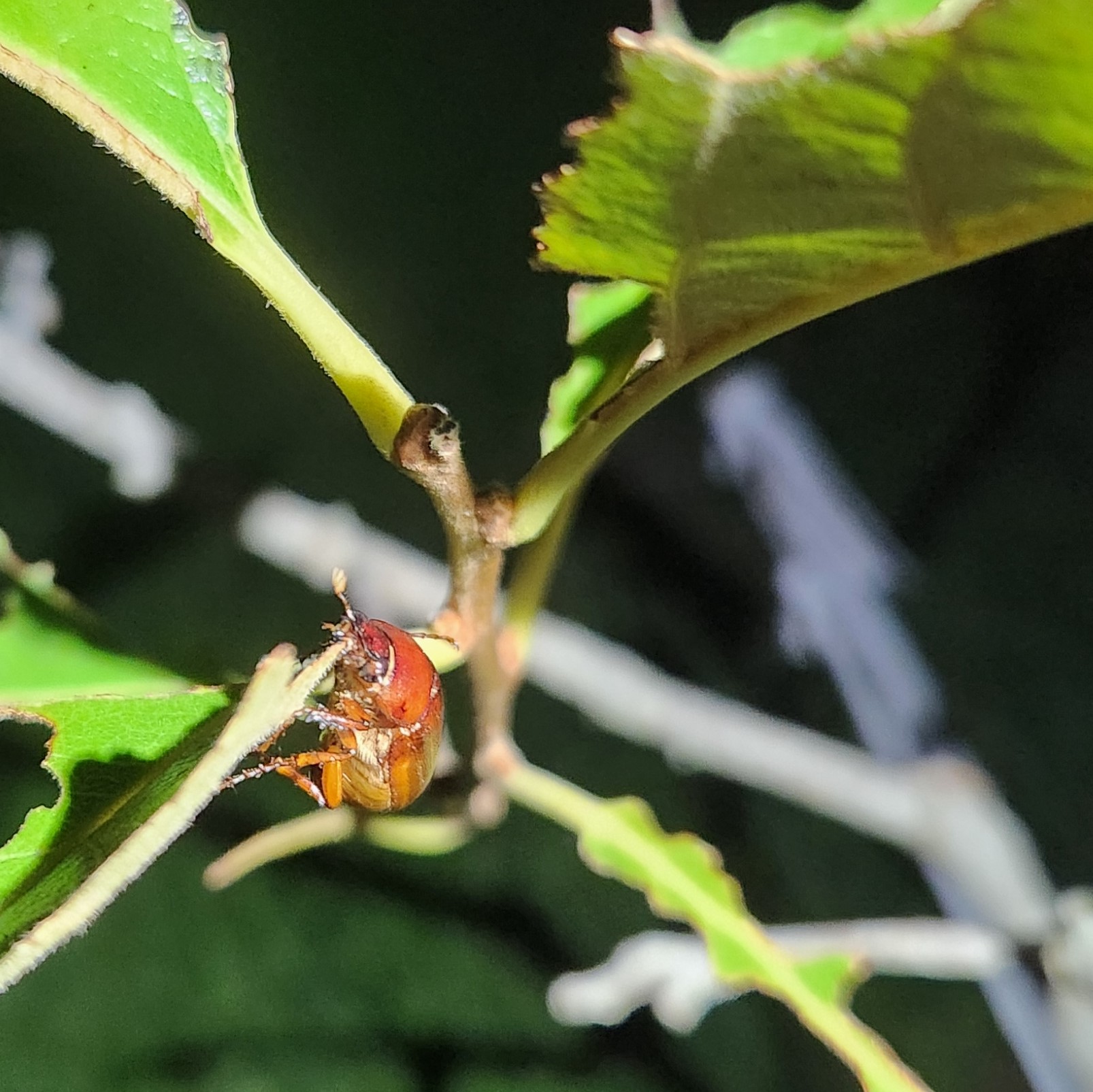PhytoFindings: June Beetles on Persimmons
Published 6:30 pm Friday, June 23, 2023
|
Getting your Trinity Audio player ready...
|
I recently noticed that something had been eating the leaves of my Japanese and American persimmon trees. The same thing seemed to be happening to my mother’s persimmon, many miles from my house. This was the first time I’d noticed this type of injury on a persimmon tree.
When we see missing leaf tissue on plants, the culprit is often either a caterpillar or beetle. Other “chewers” include grasshoppers, earwigs, and non-insect pests like slugs and snails.
I didn’t see any candidate insects on the tree during the daytime so assumed whatever it was was feeding at night. One evening, I remembered to look after sunset and found not just one but many beetles munching on my two young Japanese persimmon trees.
A search for information about leaf-feeding beetle pests of persimmon turns up information about something called the claycolored leaf beetle, also known as the persimmon beetle. However, the color and antennae of the beetle I’d collected were different.
I suspected that this was a scarab beetle of some kind and sent a few photos to my go-to entomologist at the Louisiana State Arthropod Museum. She identified it as one of the beetles in the Phyllophaga genus. (“Phyllophaga” means leaf-eaters, so it’s an appropriate name.) Members of this genus are often called May or June beetles, or June bugs.
May or June beetles feed on many species of plants. Adults cause the type of leaf injury that I saw, while the larvae of these and other scarab beetles are the white grubs that feed on roots of various types of plants, including turfgrass.
The night that I saw them, I knocked the beetles off by spraying water from the hose, but I expect that they’ve returned in the evenings since then. Because it’s been a week or two since I noticed the damage, the adult stage of the insects will likely soon be gone for this season.
For persimmons, insecticide options are limited. If you don’t mind waiting until nighttime, you can try knocking the beetles off into a bucket of soapy water.
For some other types of plants, there are more options. Active ingredients with efficacy against scarab beetles include the pyrethroids (active ingredients ending in “-thrin,” plus esfenvalerate), imidacloprid, carbaryl, and malathion. To minimize the threat to bees, avoid spraying plants (including weeds around the plants you’re targeting) while they’re flowering, and spray at times when bees aren’t active, such as the late afternoon or evening. Before using an insecticide, be sure to make sure that it’s labeled for use on the plant(s) on which you plan to use it, and read and follow label instructions.
Let me know if you have questions.
Dr. Mary Helen Ferguson is an Extension Agent with the LSU AgCenter, with horticulture responsibilities in Washington and Tangipahoa Parishes. Contact Mary Helen at mhferguson@agcenter.lsu.edu or 985-277-1850 (Hammond) or 985-839-7855 (Franklinton).





